Fourteen years after a pair of planes slammed into the Twin Towers, there are few traces of the past at the 16-acre World Trade Center site in Lower Manhattan.
One World Trade Center, the tallest building in North America, stretches skyward, welcoming thousands of office workers and tourists each day. Several other skyscrapers are still rising or already completed, and in between them stretch the white wings of a massive train station designed by architect Santiago Calatrava, which is nearly finished. In the footprints of the former World Trade Center towers, waterfalls flow into memorial pools that are surrounded by a tree-dotted plaza, a place for remembrance and reflection.
MORE See Time’s exclusive image from the top of 1 World Trade Center
Progress on this rebuilt World Trade Center often seemed slow in the years after 9/11, as political bickering and a painstaking debate over design left many in doubt over the site’s future. But gradually, week by week, beam by beam, the new complex of office buildings and public space has taken shape.
Here’s what the World Trade Center site looks like now, ahead of Friday’s 14th anniversary of the terrorist attacks.
One World Trade Center
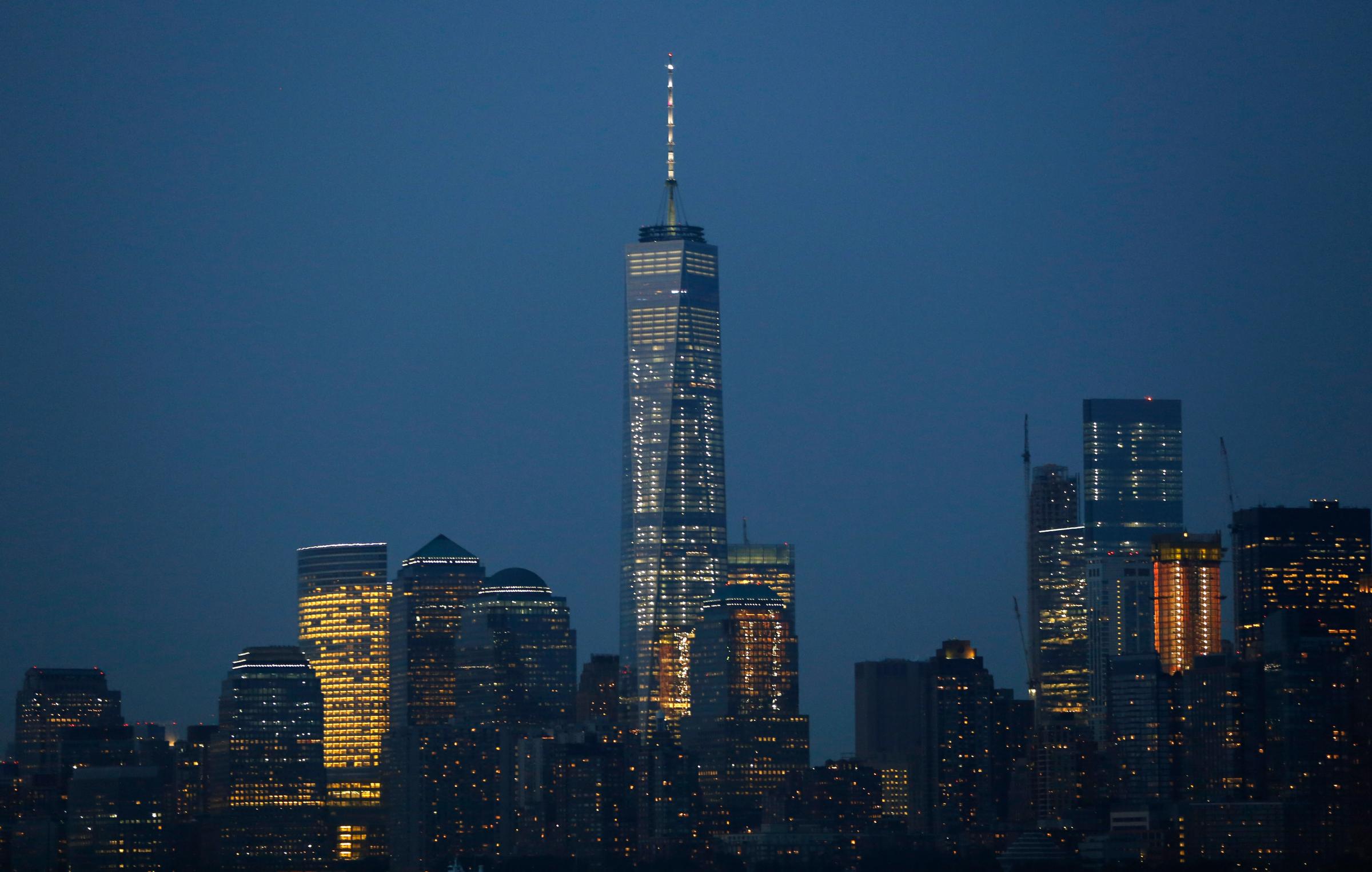
One World Trade Center soars a symbolic 1,776 ft. (541 m) tall, higher than any other building in the country. Designed by architect David Childs of Skidmore, Owings & Merrill LLP (SOM), the office tower houses companies including Conde Nast, as well as the three-level One World Observatory at its peak, which began welcoming visitors earlier this year.
2 World Trade Center
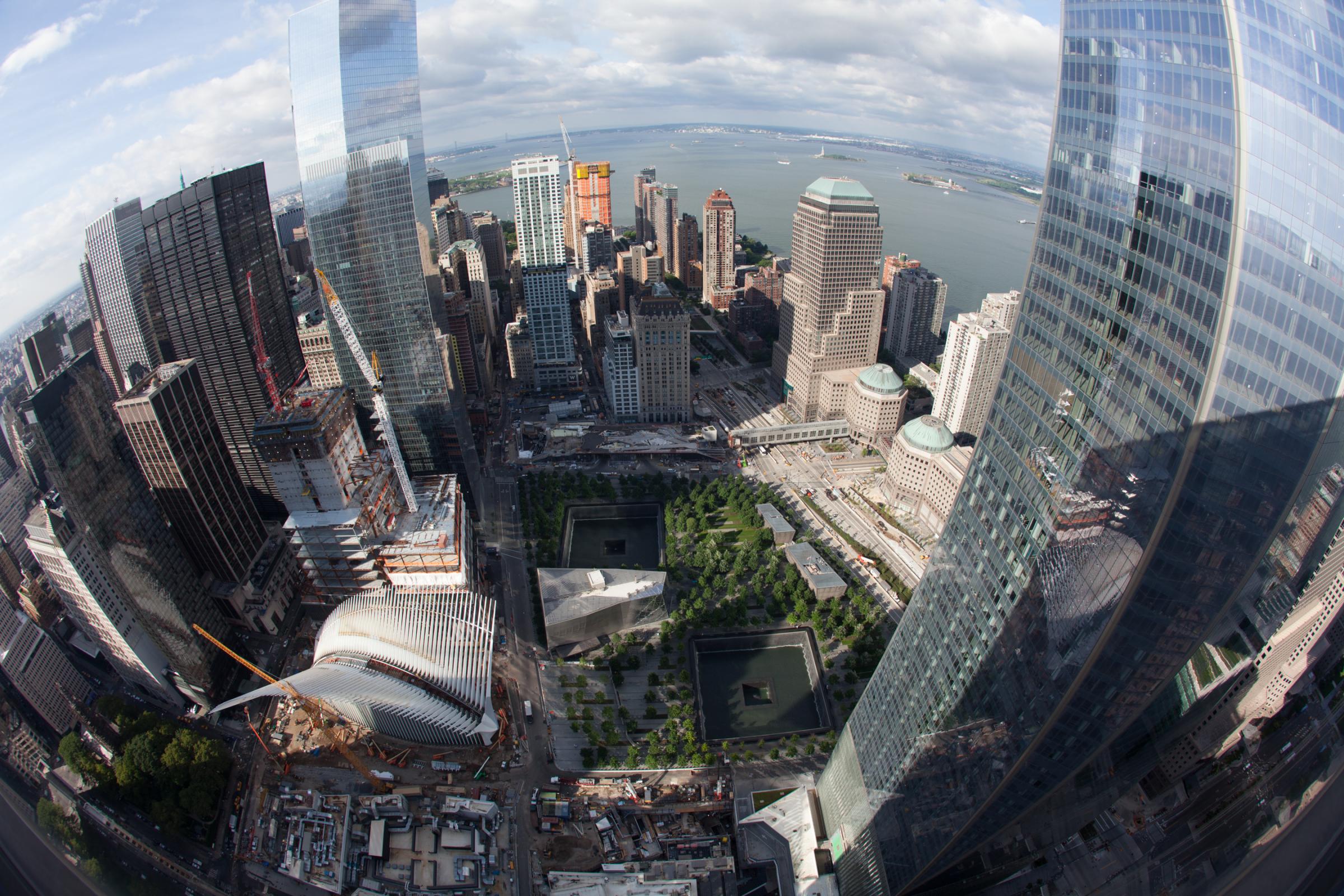
The fate of 2 World Trade Center remained uncertain until this year, when 21st Century Fox and News Corp. signed on as the anchor tenants and a new terraced design by Bjarke Ingels was unveiled. The tower will rise 1,270 ft. (387 m), the second tallest of the new World Trade Center buildings, when it opens in 2020. Its construction site is shown at the bottom left of the above image.
3 World Trade Center

The next tower to open at the site will be 3 World Trade Center, which is slated for completion in 2018. Designed by Richard Rogers of Rogers Stirk Harbour + Partners, the 1,079-ft. (329 m) skyscraper, shown at center in the above photo, has risen to about half its final height. When it opens, it will house offices for companies including GroupM, a media advertising firm, along with 150,000 sq. ft. (13,935 sq. m) of retail space.
4 World Trade Center

This 72-story skyscraper, designed by Fumihiko Maki of Maki and Associates, opened in 2013. Tenants include the City of New York and the Port Authority of New York and New Jersey, the government agency that owns the World Trade Center site.
7 World Trade Center
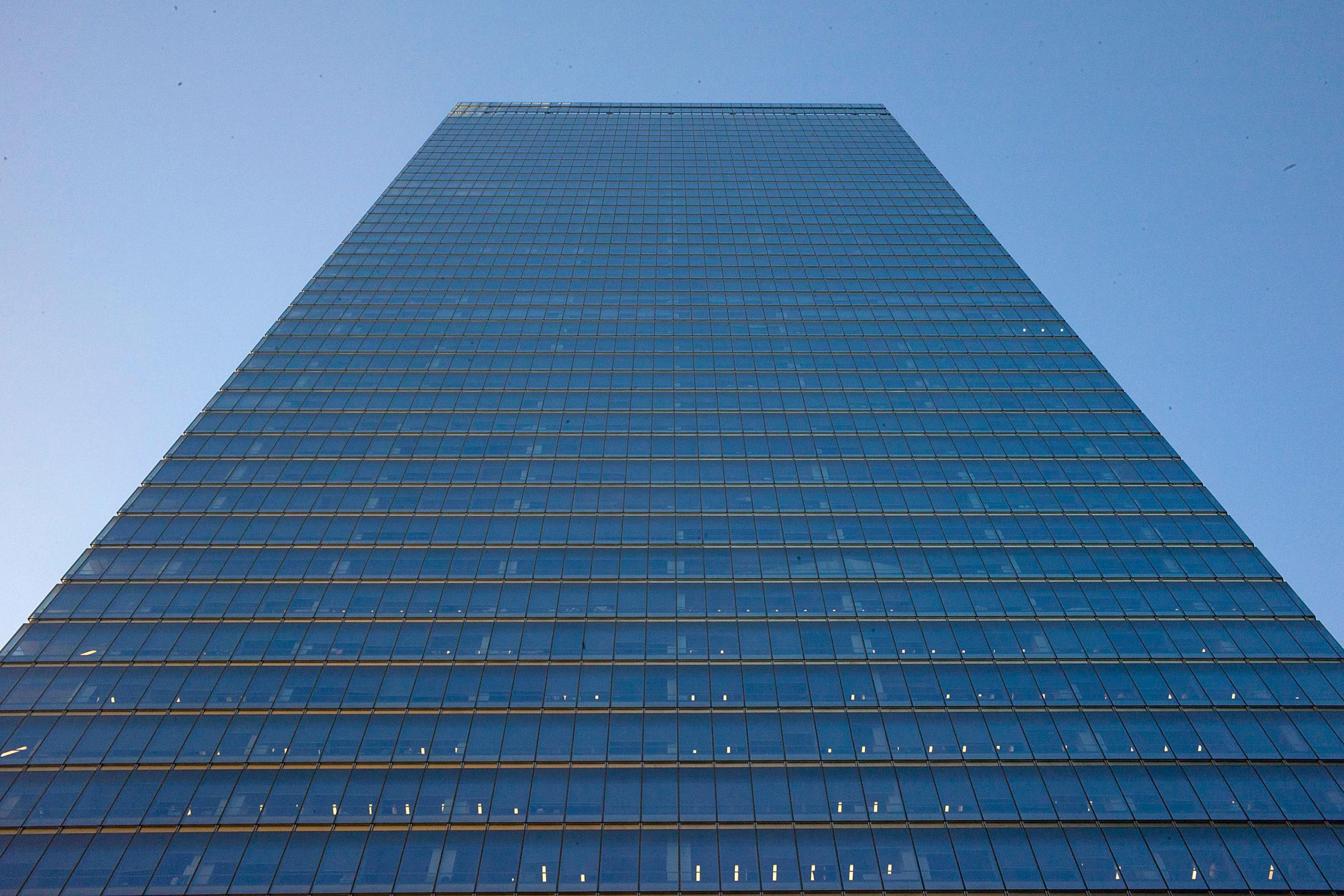
The first new office building to rise at Ground Zero after 9/11 was 7 World Trade Center, which opened in 2006. Though it is now dwarfed by its taller new neighbors, the 52-story tower still stands out for its public art installations, including pieces by Jenny Holzer and Jeff Koons.
9/11 Memorial & Museum
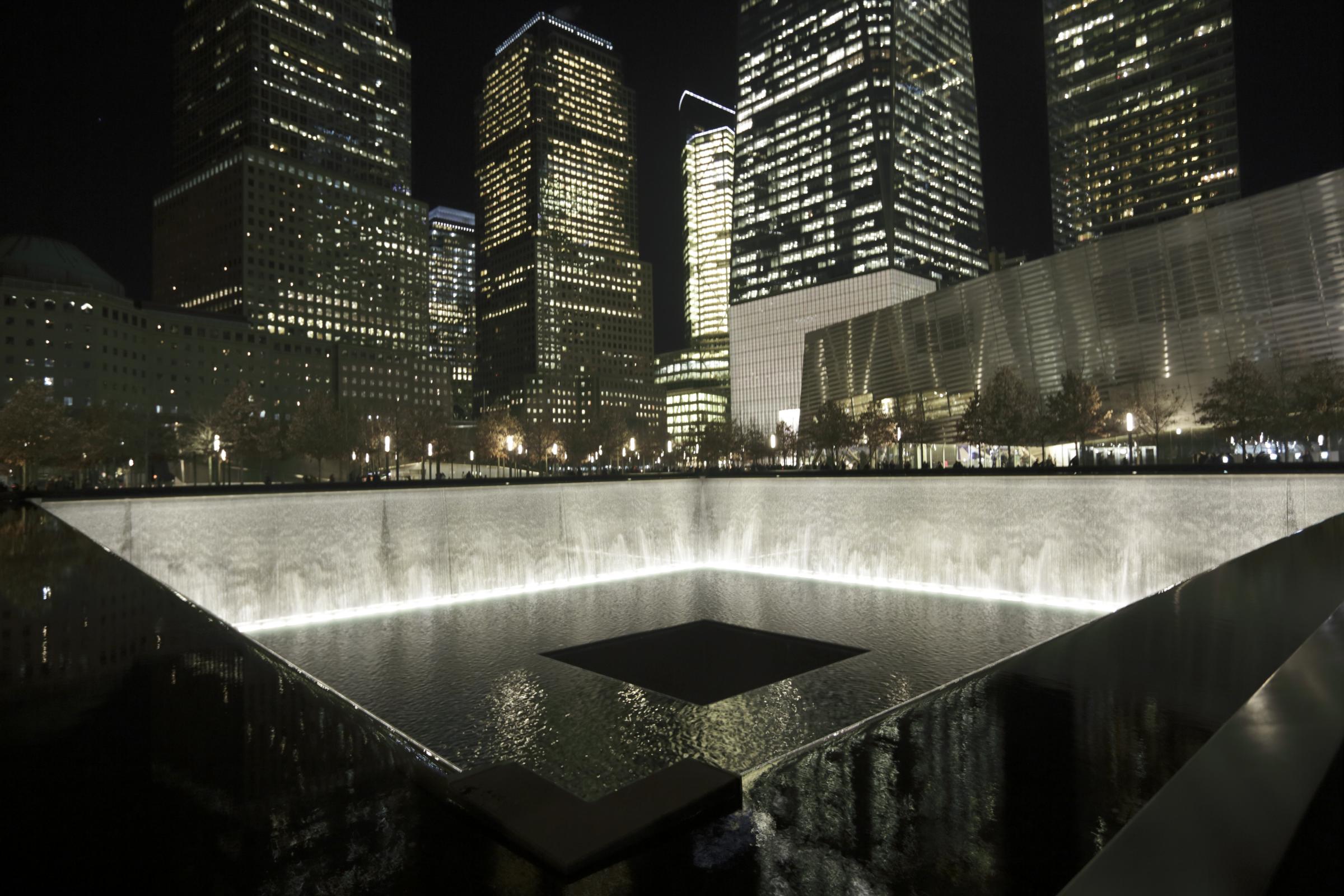
In the space where the Twin Towers once stood, waterfalls now rush into two enormous square memorial pools. The pools are ringed with bronze panels inscribed with the names of all the 9/11 victims, as well as those who were killed in the 1993 World Trade Center bombing. Beneath the tree-shaded memorial plaza is an underground museum with multimedia exhibits that tell the story of 9/11 and its aftermath.
World Trade Center Transportation Hub
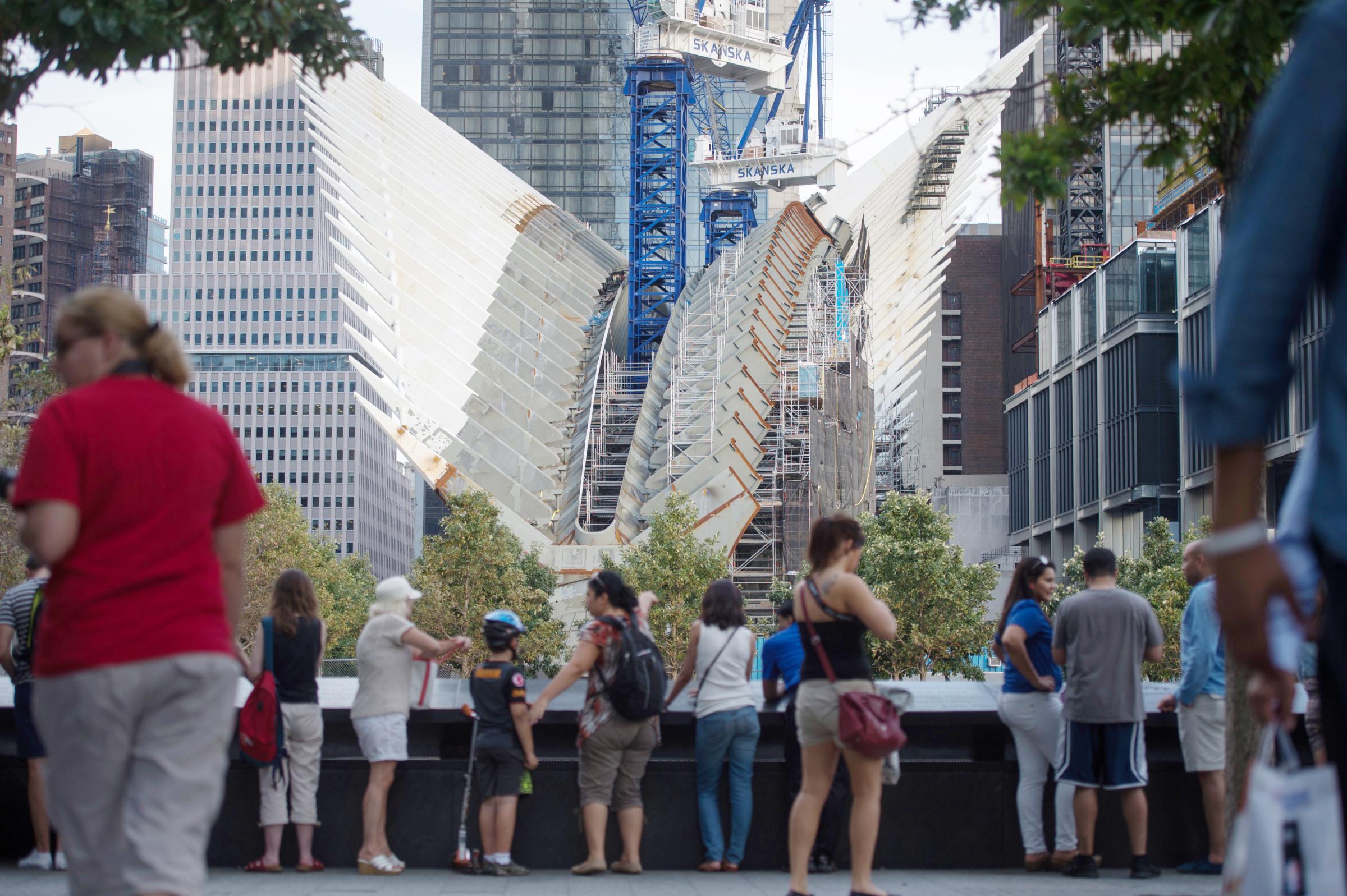
The new World Trade Center Transportation Hub was designed by architect Santiago Calatrava, whose plans were inspired by the image of a child releasing a white-winged bird. The nearly $4 billion station’s cavernous main hall is framed by two sets of white steel ribs that recall wings, and its roof features a skylight that is intended to retract for 102 minutes each year on the 9/11 anniversary, marking the duration of the attacks. The station, which will connect commuter rail lines to subways and ferries, has already begun opening to the public.
Performing Arts Center

An oft-forgotten piece of the World Trade Center redevelopment is the long-promised Performing Arts Center, which was once slated to be designed by architect Frank Gehry. The project’s budget was recently slashed and Gehry is no longer involved, but officials still say they are optimistic that a scaled-back version of the arts center will rise—eventually. The site for the Performing Arts Center is between the Transportation Hub, shown above, and One World Trade Center.
More Must-Reads from TIME
- Cybersecurity Experts Are Sounding the Alarm on DOGE
- Meet the 2025 Women of the Year
- The Harsh Truth About Disability Inclusion
- Why Do More Young Adults Have Cancer?
- Colman Domingo Leads With Radical Love
- How to Get Better at Doing Things Alone
- Michelle Zauner Stares Down the Darkness
Contact us at letters@time.com